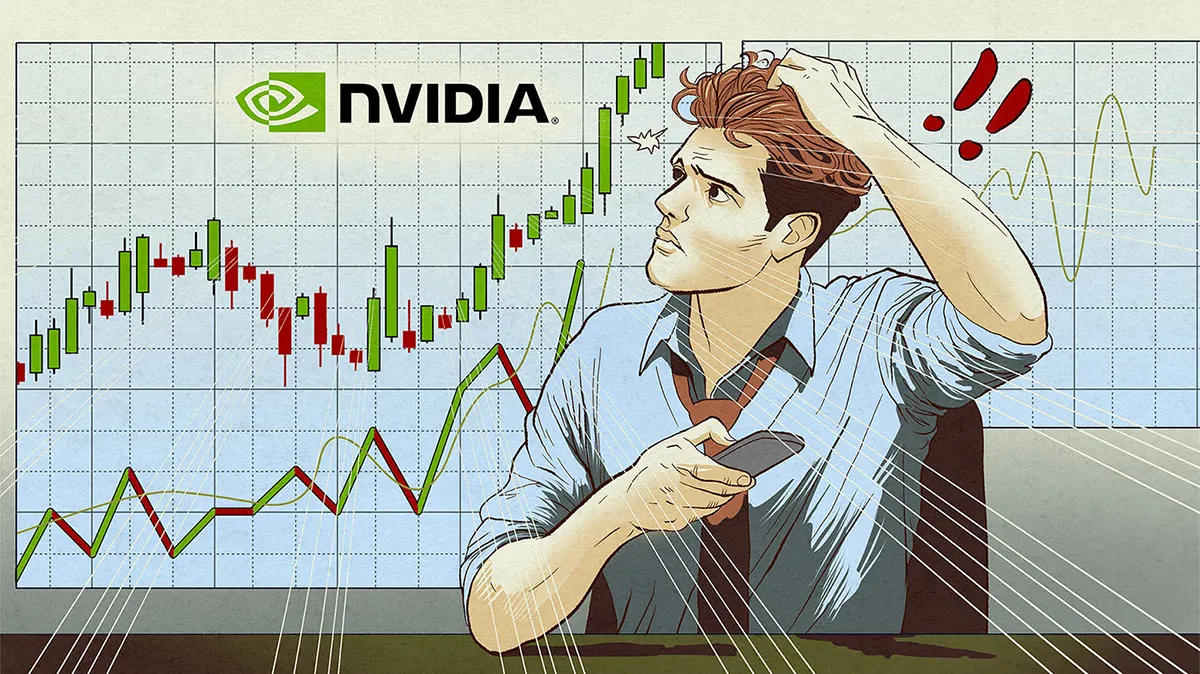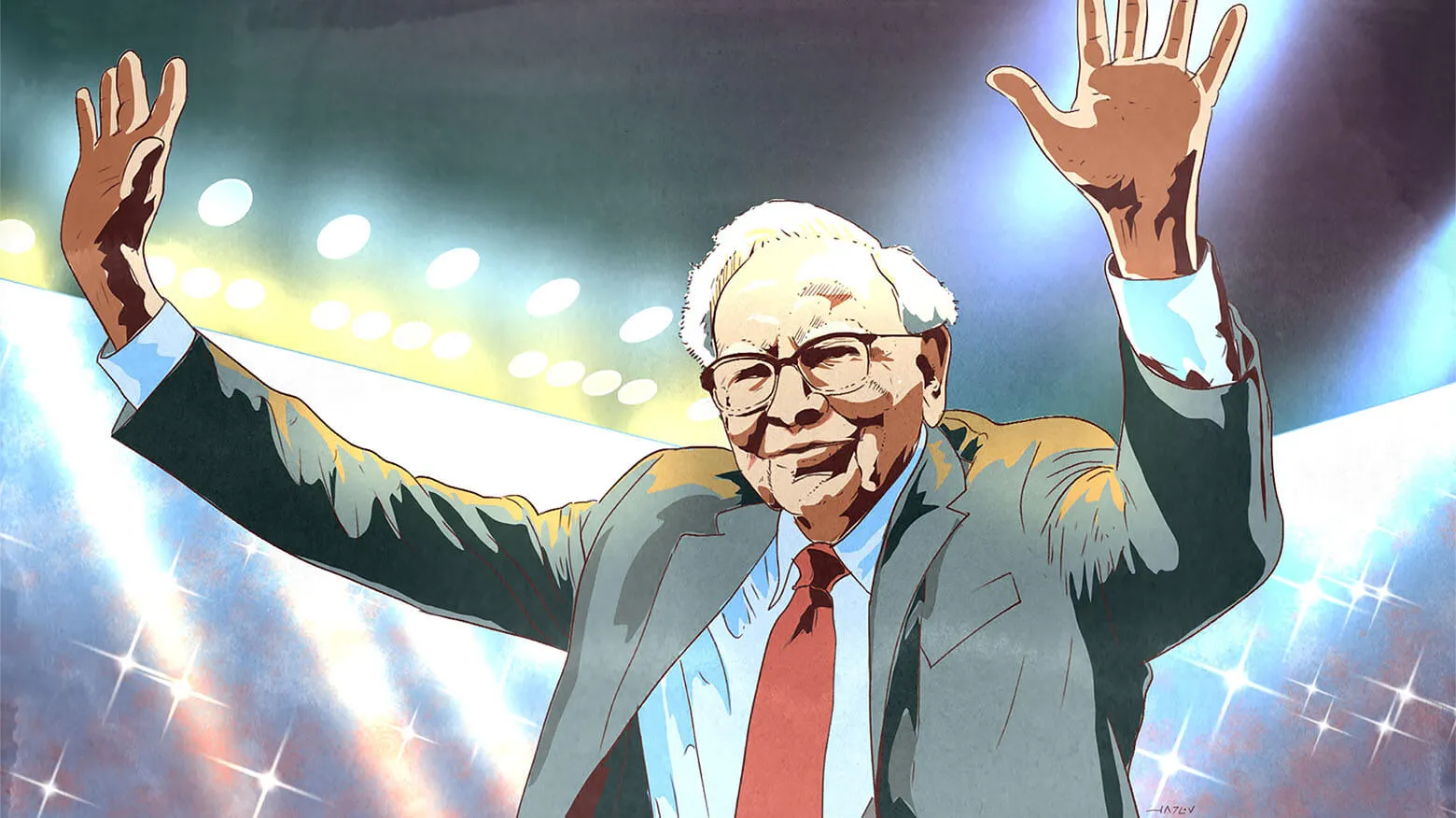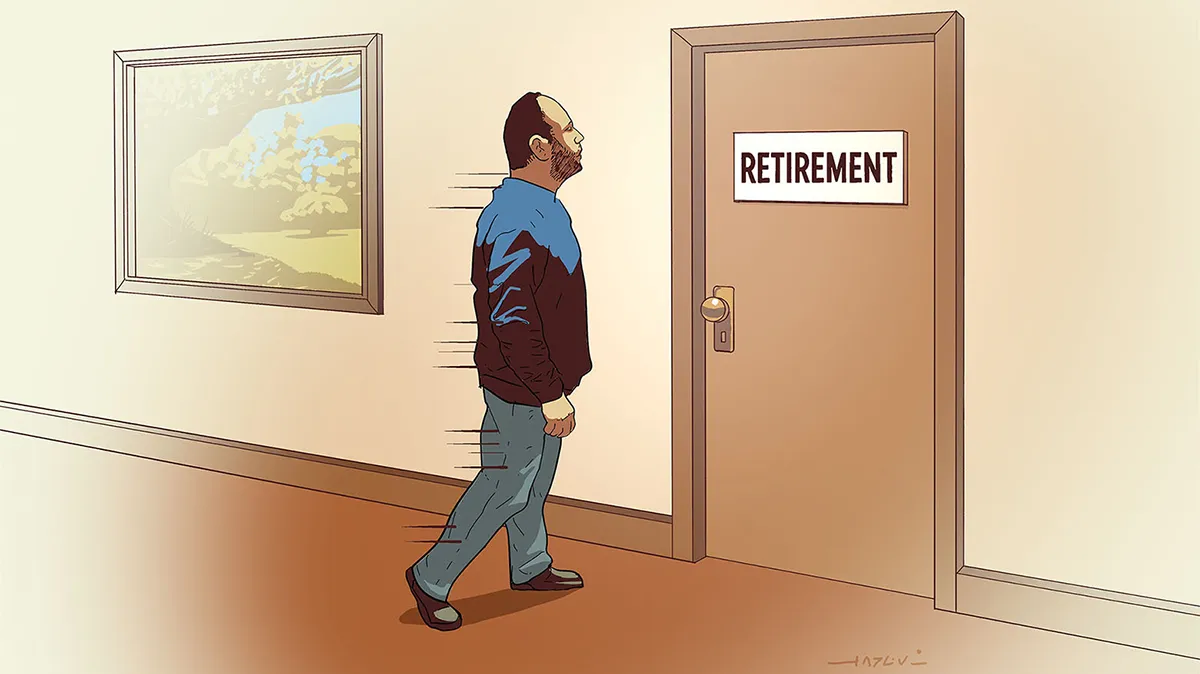Today I am sharing with you an excerpt from a letter I wrote to IMA clients in the winter of 2023. I discussed my condensed views on the stock market, economy, and our investment strategy. I think it is a good overview of where we are still today, almost a year and a half later. If you’ve read it before, skip to the end, where I share my updated thoughts on the Magnificent Seven and Nvidia.
The Stock Market
- Stock market math: Total returns = earnings per share growth + P/E change + dividends. This formula applies to any stock and any stock market.
- Stock market returns over the last 100+ years have followed a pattern: long-term bull markets (15 +/- years) followed by sideways markets (15 +/- years), not bear markets. The Great Depression was the only exception.
- Sideways markets, though, have a flat slope consisting of mini bull, bear, and sideways markets – a lot of volatility but no real returns.
- If the stock market P/E never changed, stayed at 15x, there would be no market cycles. The stock market would appreciate with earnings growth (4-6% a year) + dividends (4-5% a year).
- Human behavior causes and follows a pendulumlike momentum – excitement leads to more excitement (CNBC on all day long) 🡪 bull market. When momentum breaks, stock declines lead to more declines (CNBC off) 🡪 sideways market.
- Historically, economic growth was similar during bull and sideways markets. Changes in P/E were the cause of bull and sideways markets.
- Bull markets start when P/E is much below average: P/E increase + earnings growth = high (above-average) returns.
- At the end of bull markets P/E stops expanding, stagnates, declines. The expectation of endless nirvana is broken – welcome to sideways markets.
- Sideways markets start when P/E is much above average (end of bull market): P/E decline + earnings growth = low or no returns.
- Current valuations: If we normalize for high profit margins, P/Es are very high. P/Es are likely to decline for a long-time.
- Low interest rates boosted P/Es; higher interest rates take P/Es down.
- Profit margins are likely to decline for several reasons: selective deglobalization (widgets made in Ohio more expensive than ones made in Shanghai), higher interest rates, likely higher taxes.
- If we are lucky, we will have a sideways market.
- If unlucky, and economy goes into long-term stagnation, we’ll have a secular bear market. The most recent secular bear market was in Japan: Both P/Es and earnings declined for a long time. We are not Japan, but nor was Japan “Japan” in the early 1990s.
The Economy
- The economy is still difficult to analyze. It has been impacted by Covid distortions – too much/too little demand, supply chain disruptions, $5 trillion of debt issued by the US government.
- Tailwinds: Historically, a bet against the US consumer and US economy was a losing one. The consumer has a lot of pandemic cash. Unemployment is low. The financial/banking system is in great shape from the perspective of reserves and credit quality. Selective deglobalization will bring some jobs to the US.
- Major headwind: rising interest rates. The economy is addicted to low interest rates. It will take time and pain to readjust from zero rates to average/above average rates.
- Trillions of dollars of long-term, low-coupon debt have been issued, which will bring pain to holders who will be taking realized or unrealized losses. First-, second-, and third-order effects will be surfacing in the financial system. (The Silicon Valley Bank bankruptcy leaps to mind here.)
- Corporate debt is at an all-time high – debt paydown will take place at the expense of share buybacks, fewer capital investments, less growth.
- Housing market good news: Most mortgages are fixed-rate, not impacted by higher rates. If homeowners don’t move, they don’t feel the impact of high rates. End of good news.
- Home prices in relation to income are at an all-time high. Unless income skyrockets, homes are unaffordable to new buyers. Declining home prices will erode home equity and consumer confidence.
- The number of transactions in the housing market will reset to a semi-permanent lower level. At the new, higher rates, if you sell your house and buy one next door, your mortgage payment doubles. This also impairs workforce mobility.
- It’s unclear if unemployment will stay low. Tech companies have just started laying off high-earning workers; a lot more pain is likely.
- This is the worst geopolitical environment is generations: war in Europe and China soon to be the largest economy but not a friend. Defense spending increases are almost a certainty.
- US debt-to-GDP is 130% (the highest level since WWII) – higher interest rates will lead to more money printing to pay for higher interest payments and increases in defense spending.
- Companies are choosing resilience of supply chains over efficiency. Selective deglobalization leads to higher costs – and adds to inflation.
- Inflation leads to the reduction of purchasing power, lower savings, decline in production., which causes stagflation.
- Higher corporate and income taxes are likely – it’s almost irrelevant who runs the country. High taxes are de-stimulative and lower growth. Higher unemployment is likely.
Possible Outcomes
- Inflation gradually subsides: The economy slows down a little but is still growing. Interest rates normalize at a semi-normal level. That’s a Nirvana 1.0 outcome, a garden-variety sideways market. Or event better…
- Corporate margins don’t deflate but stay at current all-time high levels. That is the Nirvana 2.0 outcome. Market appreciation more or less matches the growth of the economy.
- Inflation persists: Inflationary sideways market – nominal earnings growth + declining P/Es. Eventually, inflation breaks by itself through stagflation or with the help of the Fed. See next.
- Inflation is broken: Economy in short-term recession – short-term bear market, long-term sideways market.
- Inflation leads to deflation or long-term recession: Bear market rhyming with the one in Japan or, if interest rates go negative, shoot-the-moon bull market!
- An outcome I did not think of.
To summarize the above, long-term stock market returns have two sources: earnings growth, which is under pressure for a longer list of reasons than usual + valuations, which are at historical highs and also under pressure.
How to Invest
Worry macro, this is what I did above, invest micro – this is what I’ll discuss next:
- Look for companies that can survive and prosper in all of the above scenarios.
- Be process-driven – the market will likely be more bipolar than usual. Know what you own, why own it, how much it is worth.
- You need to have patience – wait for opportunities to come to you.
- Competitive intensity will likely increase when the economic pie is not growing. Stick to high-quality companies run by great people.
- Increase your margin of safety – you’ll need it.
- Don’t be afraid of cash (short-term bonds) when you don’t find opportunities. Cash is better than overvalued stocks or low-quality companies – or especially the combination of the two.
- Look for stocks in other markets – they expand choice greatly.
- Don’t time markets; it’s impossible to put market timing into a process. Buy undervalued companies and sell them when they are dear.
- “Sell” is a four-letter word in secular bull markets; it is an important practice during sideways markets.
Until my father read my book, Active Value Investing, he thought investing was a legalized form of gambling and that I should do something “real”, such as open a bagel store or doughnut shop. He even offered to help. After writing the book, I realized that over the next decade or two, there will be times when I wish I had taken my father up on his offer.
Investing will be challenging as the stock market and economy enter a phase of repaying for the excesses of the past. I am fortunate to have a passion for investing, not bagels.
P.S. I asked IMA clients for feedback on this style of writing. Some appreciated the conciseness of the format. One client, a software engineer, suggested that I reduce the compression rate from 50:1 to 10:1. However, most felt that storytelling is what attracted them originally to my writing. I have to confess, though I enjoyed the challenge of compressing thoughts into compact sentences, the highlight of the essay for me was writing about the bagel shop.
P.P.S. (July 2024): From Nvidia to Nirvana: Decoding Market Expectations
Yes, not much has really changed in a year and a half. Well, maybe a little.
We have another war, this time in the Middle East. Also, Houthis are sinking ships in the Red Sea. China, Russia, Iran, and North Korea are getting ever cozier with each other; the world is more clearly dividing into us vs them.
We’re approaching the US election (on which I won’t comment here), but it’s not eliciting the world’s confidence in the US and its currency. And yes, the US debt keeps marching higher, as do our budget deficits.
AI and seven (supposedly magnificent) stocks are driving the market’s performance. I agree with the market – these companies are magnificent. I’d want my kids to work for any of them.
But there’s a magnificent difference between a magnificent company and a magnificent stock – the difference lies in magnificent valuation. The price you pay for even a magnificent company matters. (I tried to use magnificent seven times in one paragraph). Of course, I could have written this about Nvidia a hundred, even three hundred percent ago. I’ll always look dumb questioning apostasy until I’m not. I’m used to it.
I’m fairly certain what I’m about to say will age well, though not in a linear way.
Let me tell you a story.
I was talking to a friend. He told me a tree had fallen on his almost-new car. His car was totaled, and he got a check from insurance. He still had the memory of buying a car during the pandemic, how difficult it was and how expensive cars were. He said, to his shock, when he went to buy a replacement, he found car dealers fighting for his business. He got a car at a huge discount to the sticker price, because the market today is oversupplied with cars. Predictably, high prices a few years ago led to higher supply today, and thus lower prices.
Then the conversation (as you would expect) shifted to the stock market and, of course, Nvidia. He asked me what I thought about it.
Here’s what I said:
Remember how you were just telling me how difficult it was to get a car a few years ago, and now the market is flooded with them? Well, the same is happening with GPU chips.
A few years ago, some people thought those high prices would persist in the car market forever. Though I imagine most (thinking) people thought that at some point it would end in low prices. Most people, including yours truly, can relate to cars a lot more than to microprocessors; after all, we interact directly with cars daily. Here’s all we need to know: The laws of economics work the same way with microchips.
Today, Google, Apple, Facebook, Tesla, and Amazon are buying a very large number of chips from Nvidia, as it is the only game in town. Nvidia’s skyrocketing profitability is at their expense. Actually, it’s a capital expenditure – only a portion of their spending that shows up in Nvidia’s revenue shows up in Google’s earnings (income statement expenses).
Let me explain:
Nvidia is currently selling some of its AI microprocessors for $40,000 a pop. Microprocessors are capital expenditures, thus they are depreciated over five years, or so. Per accounting rules, only $8,000 of the $40,000 check written by Google to Nvidia shows up in Google’s income statement in the form of depreciation, while the full $40,000 shows up in Nvidia’s revenues. This is why these companies’ free cash flow often is much lower than their income.
All these companies are as happy to write checks to Nvidia as much as I am to write another article about a bubbly market (not so much). So, in addition to Intel and AMD, these companies are spending billions on R&D to develop their own AI chips so they don’t have to keep writing billion-dollar checks to Nvidia. Also, several dozen other companies we’ve never heard of yet are working on AI chips.
Fast-forward a few years, and these chips will be selling at a small fraction of today’s (“We are the only game in town”) price. It may take more or less time than it did with autos, but the cure for high prices is high prices. This is what I love about capitalism.
The argument I hear about Nvidia is that it’s not insanely expensive, as it is trading at somewhere around 30-40 times future earnings. True. Though it’s a high valuation for a three-trillion-dollar company, it’s not “insane.”
But, and this is a huge but, the “E” in this P/E calculation is a bit misleading and provides a false sense of security. As competing products hit the market, Nvidia’s sales will falter, and so will its margins and thus earnings.
A few years from now, the demand for microchips will likely be higher, but the buyers of microprocessors may experience a similar deja vu as car buyers today.
Key takeaways
- The stock market typically follows a pattern of long-term bull markets followed by sideways markets, with returns driven by earnings growth, P/E changes, and dividends.
- Current stock market valuations are high when accounting for normalized profit margins, suggesting P/Es are likely to decline over time, potentially leading to a sideways or bear market.
- The economy faces both tailwinds (consumer strength, low unemployment) and headwinds (rising interest rates, high corporate debt), creating a complex environment for stock market performance.
- Investing strategies for the current stock market environment should focus on high-quality, undervalued companies that can survive various economic scenarios, while maintaining patience and a strong margin of safety.









To me this is the best piece you have written. I knew much of it from your sideways markets book which I read when it came out and continue to reference and look things up. It’s interesting that GMO’s Quarterly piece tackled the same subject a couple of days ago and seemed disorganized and a bit superficial surprisingly arguing that earnings growth largely explained the Mag 7 while they tried to stick to their long time view that value reversion was the main thing. Your piece does a great job of looking at the present situation and laying out the probabilities.
There is something I would like to have you write about and which I may attempt to write about myself for Seeking Alpha. Certain market sectors tend to sell at much lower valuations than sectors with apparently similar results. I sort of get it about banks which weren’t quite so cheap compared to everything else when they first were allowed to trade (I was a kid then). Certain events can clobber banks and we can only hope that we run Biden out of town before hostile agencies make a mess of banking in general. What I really wonder about is insurance companies, which don’t have the same problems as banks. I have owned CB (and regret selling it) and still own TRV. When it was hard to generate returns in bond portfolios both CB and especially TRV did a great job of manufacturing returns with regular buybacks – much more safely and sensibly than KO or MCD. You could argue about unpredictable risks, but that’s their business, isn’t it? Lean times called for careful underwriting but, again, that’s their business and it’s not hard to find large companies which do it well. So why a P/E of 12 or so? The returns aren’t spectacular, but for a balanced portfolio they provide regular moderate growth and excellent diversification. I want to understand why they are permanently cheap. I’m a healthy old person by the way, 80 in September but still teach tennis and write and am always trying to expand my detailed knowledge of markets and economic history.
Good analogy between car prices and chips. Putting the high valuation of Nvidia into simple words, Thank you. Also for alerting me to the capitalisation of Chip expenses with Google, Apple etc. Its very sad I am always coming across ongoing operational Capital expense (an expense that should be in the income statement) being treated as capital.
great article, I like the concise points, I was able to follow it well. the thought process. thank you!
Great article, market at least for the magnificent seven seems way overvalued. I will not invest at these levels no matter how much higher they go. These stocks will correct greatly . The amount of debt is worrying and is ignored. Gold and short term bonds of 5years and less look good if these rates hold.